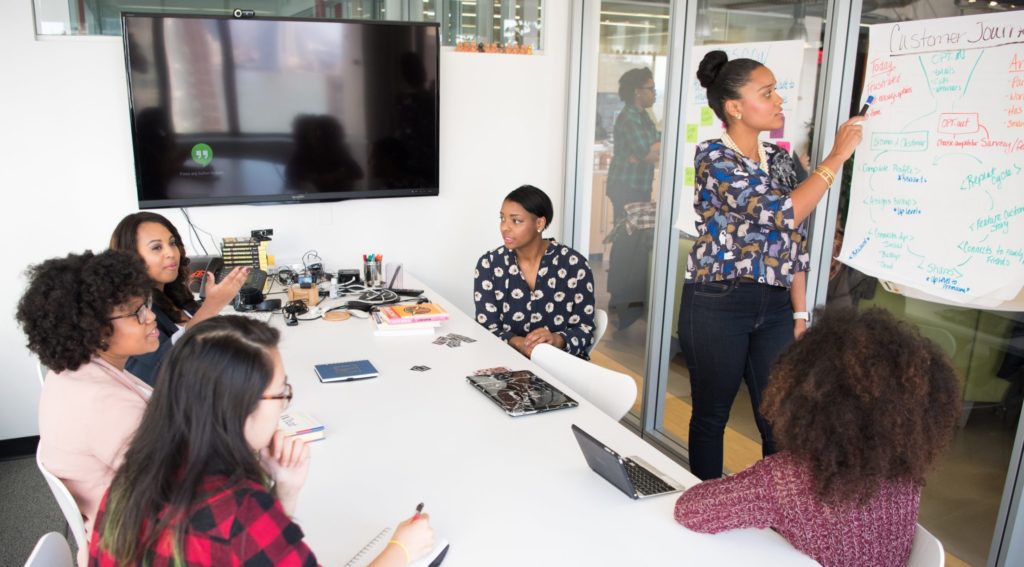Both Kerry and Addie attended sessions of the Figma Config 2022 virtual conference that was held May 10-11, 2022. Today, Addie reports back the highlights from the sessions she attended. Next week, Kerry will do the same. Let’s go!
Report back from Figma’s Config 2022 conference

The problem for UX Writers using Figma
Consistent language is essential for UX Writing to do its job but Figma doesn’t have a built-in way to find and track how language is used across a project, especially when designing new products.
The search functions in Figma are insufficient because they do not work across different areas of the product in development like menus, screens, etc.
A team of UX writers and a UI designer at SCBTechX, came together in collaboration to try to create a design system that addresses written copy and to solve, or at least make easier, this issue by using the framework built in Figma.

An important note: the need for a system to track use of language and ensure consistency across a product, is not the same as creating a style guide. In product development, a copy library of appropriate, intentional and consistent vocabulary, including not only single-word choices but phrases, is necessary. These copy choices can be different from product to product, even within the same company with the same overall style guide.
The collaborative experiment
The collaborative team at SCBTechX used a framework of Atomic design, combining visual and UI design, to create a nested design system where separate components are nested together under basic categories and retrievable through a search function organized in a simple and intuitive way.
For example, they divided the navigation into YES and NO categories so that all buttons or directions inside the product that related to affirmative or moving forward directions were nested in the YES category and anything that rejects or stops progression forward is under the NO category.
Inherent limitations in Figma
However, this system works best when there’s a shallow navigational structure. It gets more complicated to organize, and search. As the navigation gets deeper and/or as the words or phrases are more complex, the number of copy libraries needed grows.
It appears that the search capabilities allowable in Figma and the ability to customize and narrow the search function is an area for further product development. They also found a way to make master edits across the copy library, which is a big time, and headache, saver. The team who developed this UX writing design system is using it relatively successfully as a prototype.
My takeaways
From my perspective as a copywriter and editor, integrating UX writing systems and copy libraries inside Figma deserves more development. If Figma wants to become the go-to product development platform, they’ll take what this UX/UI team has done successfully, and use it to innovate their product further. It’s clear to me that because UX writers and UI designers’ needs are synergistic, the entire product development process will benefit when the whole team can work more easily and collaboratively in the same platform.
Cristen Torrey and her team at Figma did a substantial research project to learn more about collaboration among teams and what impact successful collaboration has on product outcomes. From their initial surveys, they were able to paint an accurate picture of how people felt about collaboration, including existing strengths and pitfalls. This starting block information informed the more extensive research project she presented at the conference.
Starting point: Team members love collaboration except for when they hate it.
This summed up the starting point for the research project. It came down to four main issues
- Being unaware of critical information makes it impossible to do your job.
- But collaboration has costs
- Sometimes collaboration is light and life
- Sometimes collaboration is exhausting.
People experience the four points above as uncomfortable which causes stress and worry. This is often because individuals don’t know how to solve the problems with collaboration on their own, which makes sense.
The research project questions
The questions the research team wanted to answer were first, how do teams collaborate? And second, how do teams describe a great product?
They found that although there were quite a variety of definitions of the first question, there was a lot of consensus around the second one. There was also a difference of views on what makes good collaborative behavior. However, the agreement on product development’s goal to solve customer problems was a unifying strength. This agreement led to an opportunity to approach improving collaboration and collaborative behaviors by first recognizing the common goal. Therefore, one of the key takeaways of this research is that it’s advantageous to start by acknowledging your team’s shared purpose.
Best collaborative behaviors in teams

After doing the research – among a broad range of people in 40-75% of teams in product development roles across 23 countries – they came up with the five best collaborative behaviors in product development teams.
- Co-creation – simultaneous work on the same thing while bouncing ideas back and forth
- Rapport – team camaraderie that includes knowing your team members outside of work and acknowledging them as whole people
- Role Clarity – a clear understanding of who does what as well as who needs a seat at the table when decisions are being made (not just knowing who the “decider” is)
- Feedback – sharing continuous, useful feedback that informs the iteration process
Reflection – taking time to reflect on what is and isn’t working and making changes to address problems and improve on an ongoing basis
Effects of successful collaboration on the end product
All of the five above factors proved to have an important impact on creating good products. They translated the factors to percentages to show that successful collaboration using all of these practices can result in a 24.5% cumulative positive effect on the end product. That’s an incredible impact! And more, when compared to the traditional measuring metrics for a successful product, it showed that successful collaboration behavior has the same measure of impact as setting clear goals and appropriate timelines for a product. I’m convinced that improving collaboration is the most worthwhile investment any team can make in long-term success.
Where to start?
Fortunately, the question of where to start improving your team’s collaboration is pretty simple. The research team came up with two recommendations:
- Multiply your feedback loops so there’s more than one way to promote, give, and keep feedback going continuously. Particularly if you’re not regularly spending time on reflecting and adapting, start there.
- Invest in your cultural core as a foundation. This includes improving role clarity and rapport especially. If people don’t have a seat at the table, they often don’t have the information they need to do their job. Having a say when it matters to their role is crucial. Improving rapport, in addition to encouraging people to bring their whole selves to work, also has to do with recognizing people for the work they already do to foster collaboration. Recognizing people on a weekly basis for the many different skills they bring to the table every day is a good way to grow rapport.
My takeaways
I found this presentation fascinating and enlightening. While I personally see the benefits of collaborating when it works well. I too experience the difficulties when working with people who are less comfortable with it. The starting point for the research appears to have gotten to the heart of the matter, in a qualitative way that’s challenging to isolate. This impressed me and made their findings impactful.
The results and strategies the research team created can benefit anyone who works on teams. For leaders who don’t know what collaborative behaviors are worth investing in, and how to start applying them, the strategies presented are extremely valuable. It’s clear there can be massive positive results on every level!
If you’re interested in watching the above or any of the other presentations from the Figma Config 2022 conference, you can find all the recorded sessions on YouTube on Figma’s channel at Config 2022 playlist.
LimeTech is a creative tech company with a focus on app development. We help brands grow their impact by building digital products that please customers and solve business challenges. Our work includes strategy, design, content, and tech planning. Check out our portfolio or reach out to start a conversation about your project.

![Nice to meet you, color! Color terminology explained. [updated]](https://limetech.co/storage/2021/09/reuben-4CCJ-NOUkB0-unsplash-1-496x330.jpg)
![Hello, color! How to choose colors for your app. [updated]](https://limetech.co/storage/2021/09/Classic-Color-Palettes-by-LT-1-e1632426574132-1-e1654885904844-550x248.png)